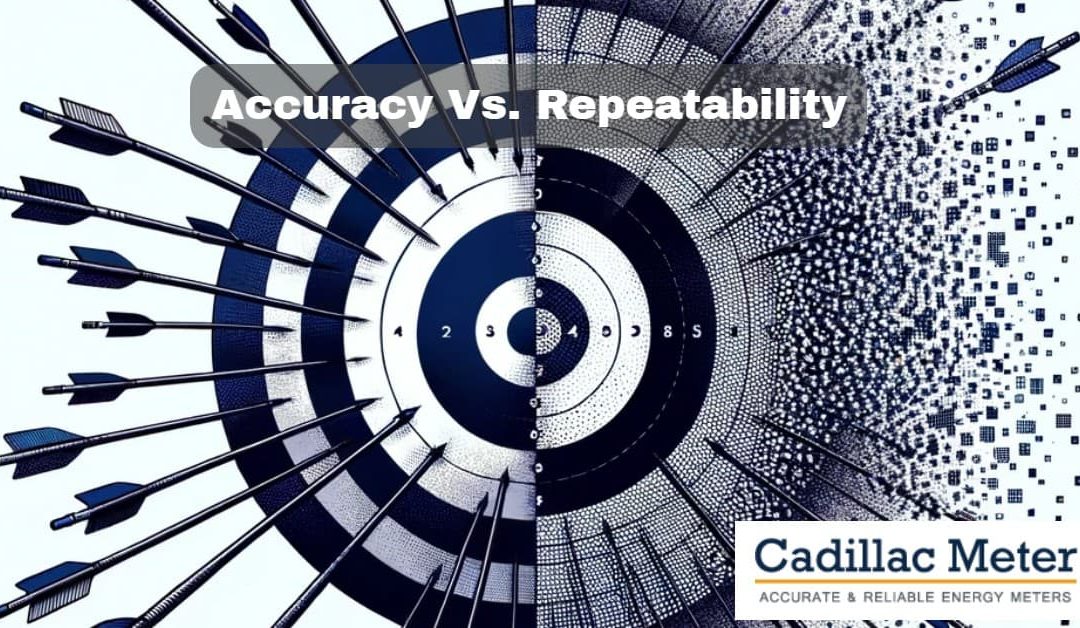Although some believe that good repeatability is a measure of accuracy, this is a misconception. Repeatability is in no way an accuracy guarantee. Therefore, when considering a measurement device such as a flowmeter, if you see only a repeatability statement and no accuracy statement, be cautious and consider your application.
Repeatability is the ability of a system or device to reproduce a measurement in unchanged conditions. Measurements taken by a flowmeter with poor repeatability would be all over the board. For instance, let’s say you’re asking your flowmeter to measure a known flow rate of 100 units per minute. A device with poor repeatability might measure 87, 102, and 95 units per minute at any given time. This concept can be compared to hits on a target. If you fire a rifle at a bullseye multiple times and the bullet holes are spread out, the rifle is not repeatable.
However, if the holes are tightly grouped, but all miss the bullseye, the rifle is repeatable but not accurate. In this case, the sights of the rifle can be used to compensate for its inaccuracy. Similarly, if a flowmeter’ measurements are repeatable― even if they aren’t accurate― the error could be mapped and compensated for.
A flowmeter with good repeatability might measure 97, 99 and 101 units per minute. Because the difference between each measurement is smaller, the measurements are more repeatable. Over time, an operator may find that setting a flow rate of 97 units per minute actually results in the desired output of 100 units per minute. Consequently, in some cases and depending on the application, repeatability is more critical than accuracy because any repeatable error can be compensated for.
As long as the flowmeter’s output is chaotic, it will not correspond closely enough with the characteristic curve. In other words, once a flowmeter’s measurements are determined to be repeatable, only then can it be considered accurate.
There are several applications that would be able to function with a flowmeter that is only repeatable, if that is all that is necessary. For example, if a tank level raises, its level controller will increase its effluent flow in order to maintain the level setting. In this case, it seems unnecessary to accurately measure the flow rate, but as long as the flowmeter is repeatable, equal flow setting changes will result in equal flow changes. And, since repeatable flowmeters are typically less expensive than accurate flowmeters, this would be an opportunity to cut costs.
However, often overlooked is the opportunity — or even necessity — of performing calculations to ensure the economics of a process or the effectiveness of process improvements. For example, if the effluent flowmeter mentioned above is a distillation column’s overhead take-off, its measurements may be used to calculate the column reflux flow rate. The original system design may not have accounted for this, but operating experience may determine that this control strategy would provide better control of the column. Many applications like this exist, and many of these opportunities are discovered only after the plant is operating. Sometimes, repeatable flowmeters should be replaced with accurate flowmeters in order to obtain operating data and accommodate improvements.
Accurate flowmeters are advantageous because they repeatedly and reliably provide measurements that closely reflect the true flow rate. Repeatable meters may not provide accurate measurements, but they still have their place in many applications. Which is most appropriate will depend in part on the application and your budget.



